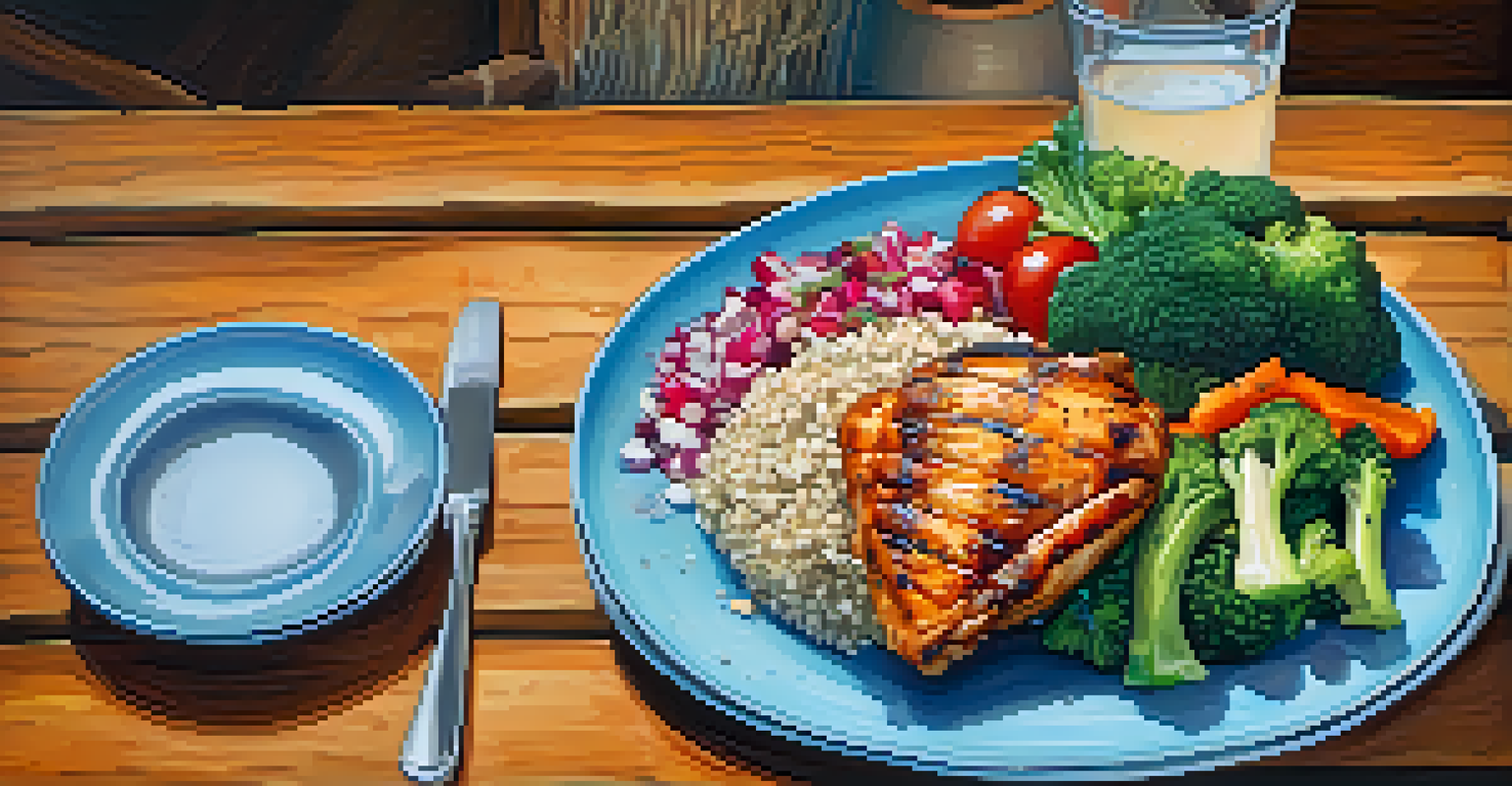Bodybuilding and Aging: Strategies for Maintaining Muscle Mass

Understanding Muscle Loss with Age: The Basics
As we age, our bodies naturally undergo several changes, one of which is muscle loss, known as sarcopenia. This gradual decline in muscle mass affects everyone, leading to decreased strength and mobility. It's essential to recognize that while aging is inevitable, the rate and extent of muscle loss can be influenced by lifestyle choices.
Aging is not lost youth but a new stage of opportunity and strength.
Studies suggest that after the age of 30, we can lose about 3-5% of our muscle mass per decade. This loss can be accelerated by factors such as inactivity, poor nutrition, and chronic diseases. However, understanding that muscle loss is not a foregone conclusion empowers us to take action.
By implementing strategic approaches, we can significantly reduce the impact of aging on our muscles. Embracing a proactive mindset is the first step towards maintaining muscle mass and enjoying a healthier, more active lifestyle.
The Role of Resistance Training in Muscle Maintenance
One of the most effective strategies for combating muscle loss is incorporating resistance training into your routine. This type of exercise, which includes lifting weights or using resistance bands, is crucial for stimulating muscle growth and strength. Engaging in regular resistance training not only helps maintain muscle mass but can also improve bone density and overall functionality.

Aim for at least two sessions of resistance training per week, focusing on all major muscle groups. This doesn't mean you have to lift heavy weights; even bodyweight exercises like push-ups and squats can be incredibly effective. The key is consistency and gradually increasing the challenge as your strength improves.
Combat Muscle Loss with Training
Incorporating resistance training into your routine is crucial for maintaining muscle mass and overall functionality as you age.
Resistance training also has the added benefit of boosting your metabolism, which can help manage weight as you age. By making this a staple of your fitness routine, you're not just preserving muscle—you're enhancing your quality of life.
Nutrition's Critical Role in Preserving Muscle Mass
Nutrition plays a pivotal role in maintaining muscle mass as we age. Consuming an adequate amount of protein is essential since protein provides the building blocks for muscle repair and growth. Aim for a protein-rich diet that includes sources like lean meats, fish, dairy, legumes, and nuts, ensuring you meet the recommended intake of around 1.2 to 2.0 grams of protein per kilogram of body weight daily.
The greatest wealth is health.
In addition to protein, it's important to focus on overall balanced nutrition. Incorporating a variety of fruits, vegetables, whole grains, and healthy fats will provide the vitamins and minerals essential for optimal muscle function and recovery. Don't forget about hydration; staying well-hydrated supports muscle performance and recovery.
Consider spreading your protein intake throughout the day rather than loading it all into one meal. This approach can maximize muscle protein synthesis and help maintain muscle mass effectively.
The Importance of Rest and Recovery for Aging Muscles
As we age, our bodies may take longer to recover from workouts, making rest an important aspect of any fitness plan. Ensuring adequate recovery time allows your muscles to repair and grow stronger. This means incorporating rest days into your exercise regimen and listening to your body's signals.
In addition to taking rest days, consider techniques like stretching, foam rolling, and gentle yoga to promote recovery and flexibility. These practices can help reduce muscle soreness and improve overall mobility, making it easier to stay active.
Nutrition Fuels Muscle Maintenance
A protein-rich diet combined with balanced nutrition is essential for muscle repair and growth, aiding in the preservation of muscle mass.
Sleep is another critical component of recovery. Aim for 7-9 hours of quality sleep each night, as this is when your body does much of its recovery work, including muscle repair. Prioritizing rest and recovery will ultimately enhance your training results and help maintain muscle mass as you age.
Incorporating Cardiovascular Exercise for Overall Health
While resistance training is key for maintaining muscle mass, cardiovascular exercise shouldn't be overlooked. Activities like walking, swimming, or cycling are great for enhancing heart health and improving endurance. Additionally, cardiovascular exercise can help regulate body weight, which is important for muscle maintenance.
Aim for at least 150 minutes of moderate-intensity aerobic activity each week. This can be broken down into manageable sessions, making it easier to fit into your schedule. A well-rounded routine that includes both cardio and strength training leads to better overall health outcomes.
Remember, the goal is to maintain an active lifestyle that includes various forms of exercise. This combination not only helps preserve muscle mass but also boosts your energy levels and improves your mood, making daily activities more enjoyable.
Staying Motivated: Setting Realistic Goals
Staying motivated as you age can sometimes be a challenge, especially when it comes to fitness. Setting realistic and achievable goals is essential for maintaining motivation and tracking progress. Instead of aiming for drastic changes, focus on small, measurable goals that you can work towards over time.
For instance, if you're new to resistance training, start by aiming to complete a specific number of workouts each week. As you build confidence and strength, gradually increase the intensity or frequency. Celebrating these small victories can keep you motivated and make the journey more enjoyable.
Rest and Recovery are Key
Adequate rest and recovery, including quality sleep and active recovery techniques, are vital for muscle repair and growth in aging bodies.
Additionally, consider finding a workout buddy or joining a community. Sharing your goals with others can provide accountability and encouragement, making it easier to stay committed to maintaining muscle mass as you age.
Consulting Professionals: A Smart Approach
As you embark on your journey to maintain muscle mass, consulting with professionals can be a game-changer. A personal trainer can help design a tailored workout program that meets your specific needs, taking into account any limitations or health concerns. They can also ensure you're using proper form to prevent injury.
Similarly, a registered dietitian can provide personalized nutrition advice to support your muscle maintenance goals. They can help you craft a meal plan that meets your protein needs while ensuring you get a balanced intake of nutrients.

Having expert guidance can boost your confidence and help you stay on track. Remember, seeking help from professionals is not a sign of weakness; it's a proactive step towards achieving your health and fitness goals as you age.